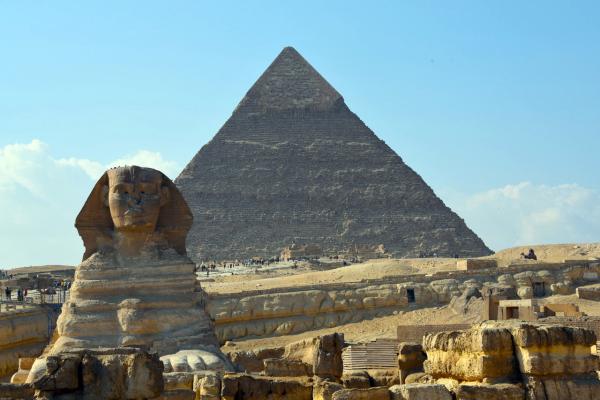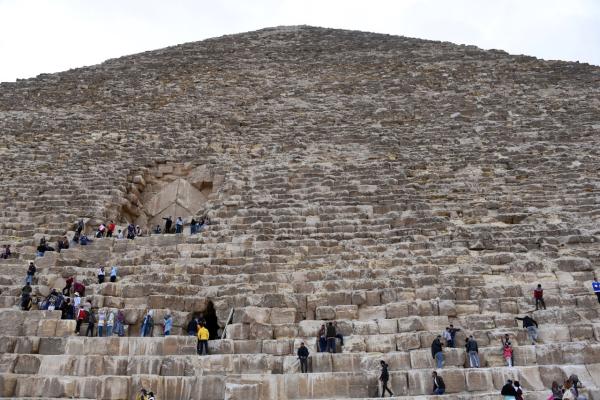KID REPORTERS’ NOTEBOOK
A Visit to Egypt


The Sphinx, a a limestone statue with the head of a man and the body of a lion, is situated near the Great Pyramid of Giza.
The country of Egypt is known for its ancient artifacts, tombs, pyramids, and pharoahs. One of its most famous rulers, a boy king named Tutankhamun, has been a source for one of the greatest archeological discoveries in the world.
Recently, my family and I visited Egypt for eight days. Located in Northern Africa, the country is home to more than 105 million people. While there, we explored pyramids, tombs, and temples built by the ancient Egyptians.
Even before I visited any historical sites, I noticed significant differences between Egypt and the United States. In the places I visited, I rarely saw traffic lights at intersections. Without any coordinated system, most cars forced their way through traffic.
Many buildings appeared unfinished. Often the top floor still had concrete pillars and wires sticking out, as if another floor was to be built. Our guides gave us two different explanations for this. One was that an unfinished building isn’t taxed. We also were told that when a father ran out of money, his son was supposed to finish the house. Other accounts attribute the half-finished buildings across Egypt to the neglect that followed an uprising there in 2011.

Ancient pyramids were built with large, heavy boulders.
THE GREAT PYRAMID OF GIZA
The first site we toured was the Great Pyramid of Giza. It was built more than 4,500 years ago by the pharaohs Khufu, Khafre, and Menkaure. While experts still don’t know how such an amazing structure could be built so long ago, Egyptologists suspect that ramps were used to haul the heavy blocks up into position.
While visiting the pyramids, I couldn’t help but notice their massive size. They seemed like the skyscrapers of Ancient Egypt.
It was long thought that enslaved people built the pyramids, but that isn’t true. Egyptian laborers who helped in the construction were ultimately buried near the king, which was considered a great honor.

Siroos visits the Valley of the Kings in Egypt.
THE VALLEY OF THE KINGS
We also visited the Valley of the Kings, where King Tut is buried. Ancient Egyptians believed that after a pharaoh died, he would become a god in the afterlife. Because of this belief, Tut and other pharaohs were buried in tombs filled with gold, jewelry, and other items needed in the afterlife.
The walls of the tombs are carved with colorful images of the pharaohs accompanied by gods of the underworld. It was thought that the gods would guide the pharaohs to the afterlife.
In addition to tombs and pyramids, we saw temples made of cut rock that are dedicated to Egyptian gods and pharaohs. “The Abu Simbel Temples were my favorite part of Egypt,” said my 10-year-old sister, Vida. “Seeing the amazing architecture required to build the temples was definitely worth the long drive and 4 a.m. wake-up call.”
